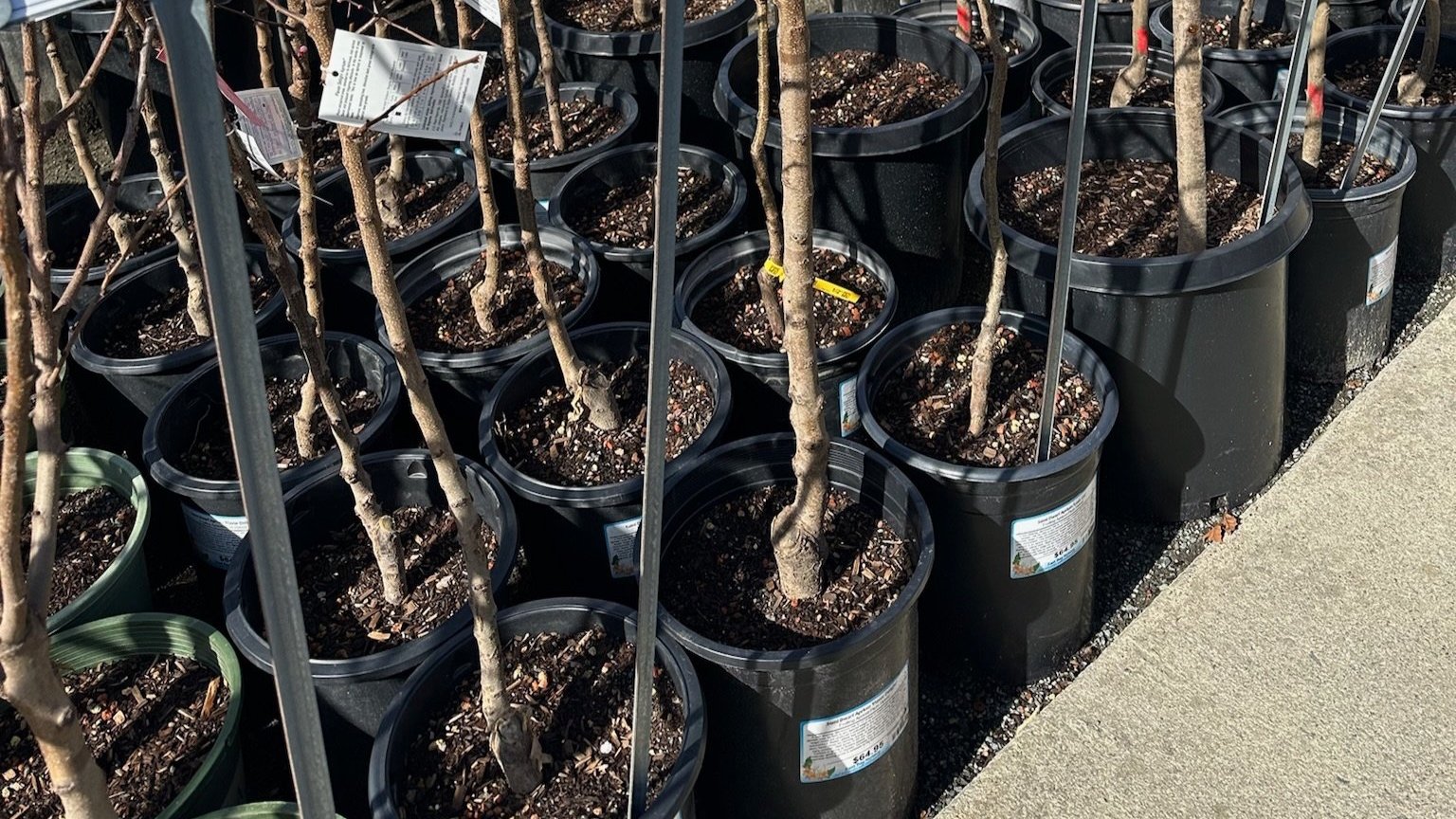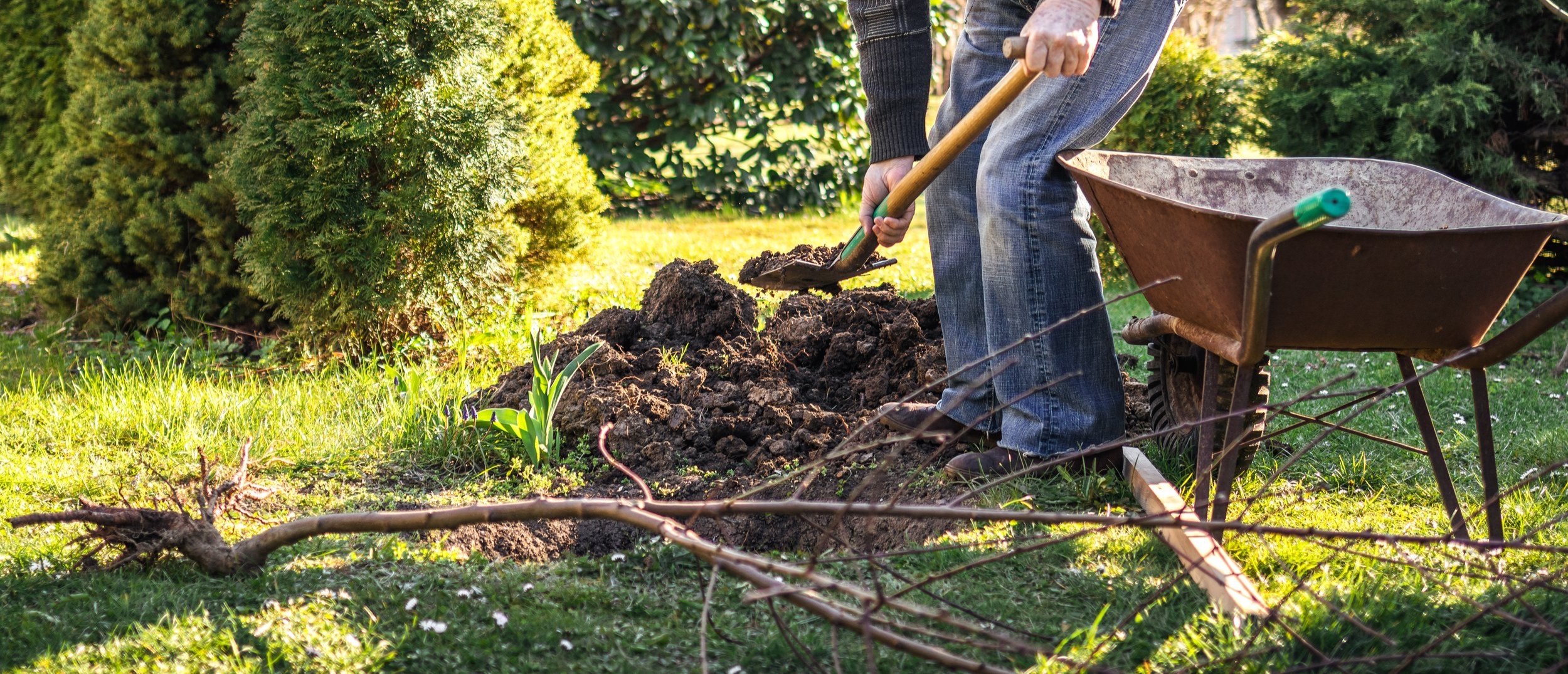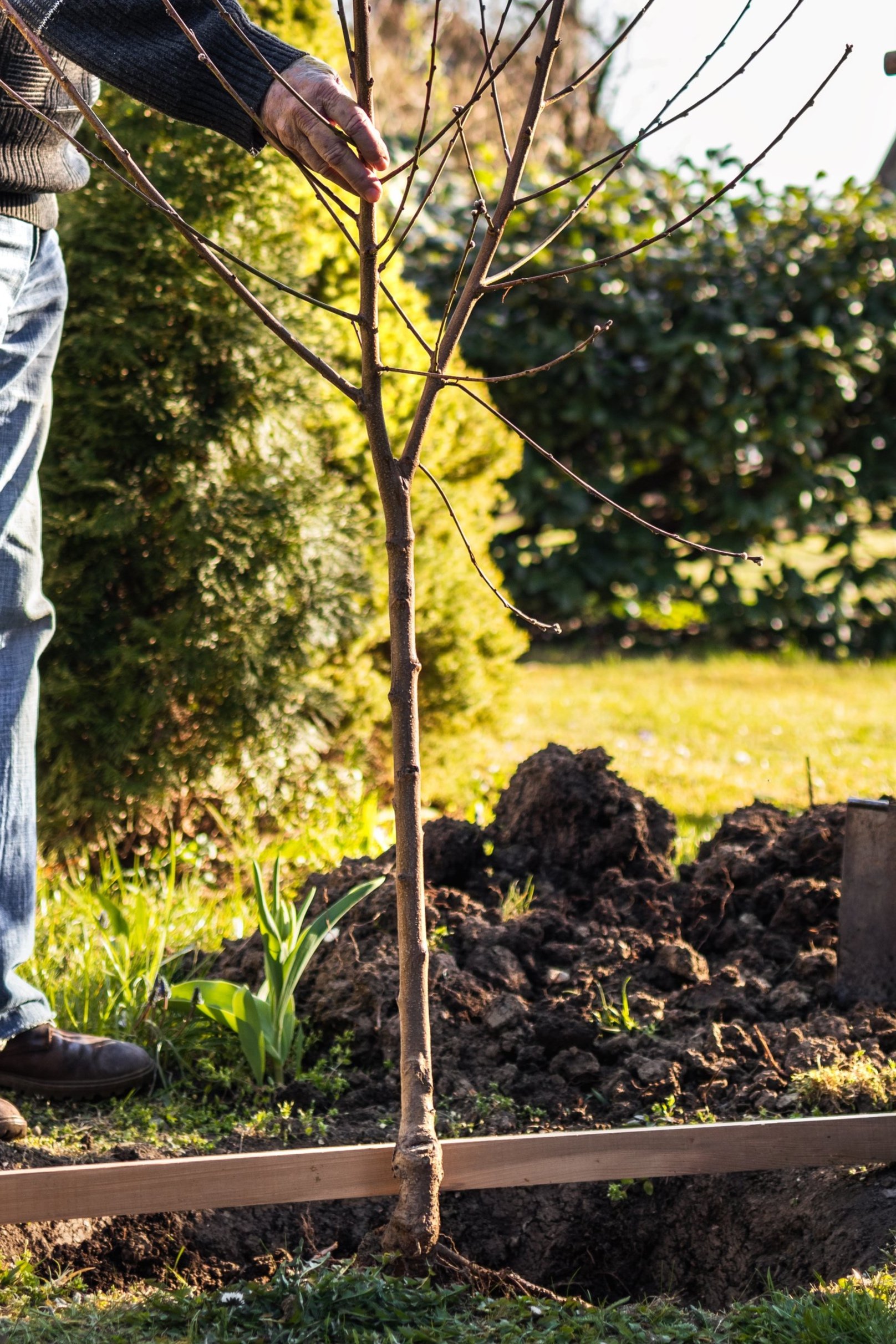Planting Bare Root Trees
Planting Bare Root Trees
Planting Bare Root Trees – Benefits
Our Bare Root trees are 2-3+ years old when they are carefully dug from the ground when dormant, placed in cold storage without any soil around their roots, graded and bundled, then shipped. We receive our bare root fruit trees in early to mid-January. We immediately pot them your convenience and to reduce stress on the trees. Like our bare root roses, you receive the benefit of sale pricing on our bare root fruit trees. Our fruit tree sale will continue through February.
The best time to plant is January through March when the trees are still dormant, however, since our bare root trees are potted, you do have more time to consider where or when you may want to plant. Select the spot to plant with great consideration as established fruit trees do not move well. It is typically not recommended to plant bare root when they are in bloom. Do not fret if your window for planting coincides with the trees bloom time, we recommend removing all fruit in the first year so the potential disruption of the bloom time is inconsequential.


Planting Guide:


Plant by digging a hole the same depth as the roots and 2 ½ times the spread of the roots. Roughing up the sides of the hole can assist root penetration.
Build a cone-shaped mound of soil in the center of the hole. Place the tree on top of the mound and spread the roots evenly. The planting depth of the tree is determined by how it was grown at the nursery. Examine the trunk near where the roots form, there will be a visible color change in the bark., this defines the depth at which the tree should be planted. Adjust the height of the mound so that this line is even with the existing soil line in your garden. Lay a stake or shovel handle across the hole to be sure that you have the proper height.
Backfill with a blend of native soil and a rich planting mix or organic mix, firming the soil with your hands.
Water thoroughly, letting it drain and then repeat. This helps remove air pockets and firmly packs the soil around the roots.
Add a 2 inch layer of mulch over the root area (ensuring it is not piled against the trunk) and then again, water the whole area thoroughly.
Trees need regular watering for the first year or two until full establishment. A weekly thorough, slow soaking is recommended, until the weather warms, and then twice a week is recommended. It is advised to wait at least four weeks after planting before fertilizing.
